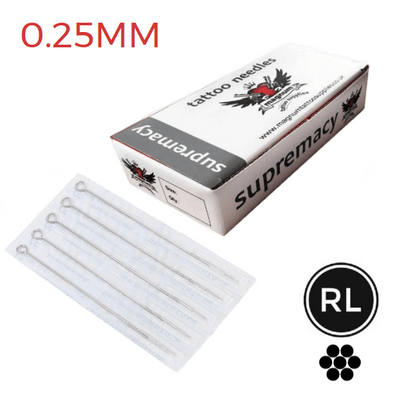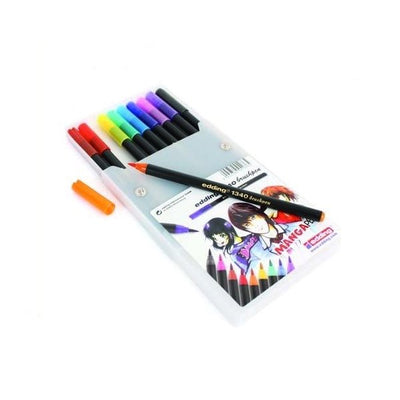Every body art starts with a well-crafted stencil, serving as the blueprint for the final tattoo. While tattooing may seem mystifying to the uninitiated, creating the perfect tattoo stencil is an art form.
However, achieving precision and detail in your tattoo designs can be a pain point. From struggling with smudged stencils to dealing with intricate designs that seem impossible to transfer flawlessly onto the skin, tattooing has its challenges.
So, in this guide, we will explore everything you need to know about the ultimate tattoo stencil, from its types and creation methods to crucial considerations for both tattoo artists and clients.
What is the importance of tattoo stencils?
Tattoo stencils are a fundamental and indispensable aspect of the tattooing process, holding significant importance for the tattoo artist and the client.
Firstly, stencils serve as a blueprint for the design, allowing the artist to represent the desired tattoos accurately and precisely. This ensures that the final artwork matches the client's expectations and helps the artist maintain consistency and symmetry in the design.
Additionally, stencils aid in the tattoo's placement, ensuring it aligns correctly with the body's contours and proportions. This attention to detail is essential for achieving a visually appealing and well-balanced tattoo. Furthermore, stencils enhance safety by minimising the risk of errors or infections, as they guide the artist in adhering to hygiene standards and avoiding mistakes.

What is the most effective way to create a tattoo stencil?
The most effective way to create a tattoo stencil is, to begin with a high-resolution digital image of the desired design and use software like Adobe Photoshop or a dedicated tattoo stencil software to refine and adjust the design as needed. Once satisfied, print the stencil onto thermal stencil paper using a thermal printer or a laser printer.
This method offers precise control over the design, the ability to make adjustments easily, and ensures a clean and detailed stencil. Additionally, it minimises the risk of errors and provides consistency in the final tattoo, making it a highly effective and preferred approach for many tattoo artists.
Different types of tattoo stencil paper
Hectograph paper:
- Ideal for hand-drawn stencils
- Three-layer structure: The top layer is for drawing, the middle layer is to prevent sticking, and the bottom layer becomes the stencil.
Thermal paper:
- Compatible with thermal printers and digital images
- Four-layer structure: Top layer for design, middle brown layer (onion layer) removed before printing, carbon ink sheet, and protective bottom layer.
Tracing paper:
- These tracing papers are for freehand drafts
- Single translucent layer with no added backing, onion, or ink sheets.

What to look for when buying tattoo stencil?
Compatibility with your method
Ensure that the stencil paper is compatible with your preferred stencil creation method, whether it's hand drawing, thermal printing, or digital design. Choose the type of stencil paper that aligns with your tattooing technique.
Quality and durability
Look for stencil paper that is of high quality and durable. Stencil paper should withstand tattooing without smudging, tearing, or fading, ensuring a clean and precise transfer onto the skin.
Ease of use
Consider how easy it is to work with the stencil paper. It should allow for smooth and accurate tracing or printing of the design and not cause unnecessary complications during the application process.
Transfer clarity
Check for the ability of the stencil paper to produce clear and sharp transfers onto the skin. A good stencil paper should accurately reproduce the design without distortion.
Size and thickness
Ensure that the stencil paper is appropriate for your specific tattoo design. Also, consider the thickness of the paper, as thicker paper may be more durable but harder to transfer onto the skin.
Layer structure
If you opt for thermal or hectograph paper, understand the layer structure and how it works. For thermal paper, ensure it has the necessary layers for thermal printing and easy removal of the onion layer.
Brand and reputation
Choose stencil paper from reputable brands or suppliers known for producing quality tattooing products. Read sold reviews on their page or site, and seek recommendations from fellow tattoo artists if possible.
Price and quantity
Consider your budget and the stencil paper you need. Stencil paper is often available in various package sizes, so choose the prices that suit your requirements without compromising quality.
Compatibility with skin types
Some stencil papers may work better on certain skin types or tones. Consider the type of skin you commonly tattoo and whether the stencil paper you choose performs well on those skin types.
Environmental impact
If you're environmentally conscious, look for eco-friendly stencil paper options that minimise environmental impact.

Is it possible to create a tattoo stencil without transfer paper?
Yes, it is possible to create a tattoo stencil without transfer paper, although it's not the most common or recommended method. One alternative approach is freehand tattooing, where the artist draws the design directly onto the client's skin using a sterilised pen or marker. This method requires high skill and precision, as no stencil guides the tattooing process.
Artists experienced in freehand techniques may opt for this method for certain designs, especially when creating custom artwork or intricate designs that are challenging to transfer via stencil.
However, it's essential to note that using transfer paper or digital methods for stencil creation remains the industry standard due to its precision and consistency. Freehand tattooing is typically reserved for highly skilled professionals confident in drawing directly onto the skin.
Conclusion
The tattoo stencil is the foundation upon which every great tattoo is built. Its creation demands careful consideration, precision, and the right choice of materials and understanding the nuances of tattoo stencils can enhance your appreciation for the artistry involved and ensure that your tattoo experience is nothing short of extraordinary.
By making informed choices in stencil creation, you embark on a journey to transform your creative vision into a lasting work of art on the canvas of the skin.



























































 Studio supplies
Studio supplies












 Power & batteries
Power & batteries








 Aftercare
Aftercare





















 Apprentice
Apprentice


 Piercing & jewellery
Piercing & jewellery







 PMU supplies
PMU supplies




 New arrivals
New arrivals
 Gift vouchers
Gift vouchers
 Shop all
Shop all















































